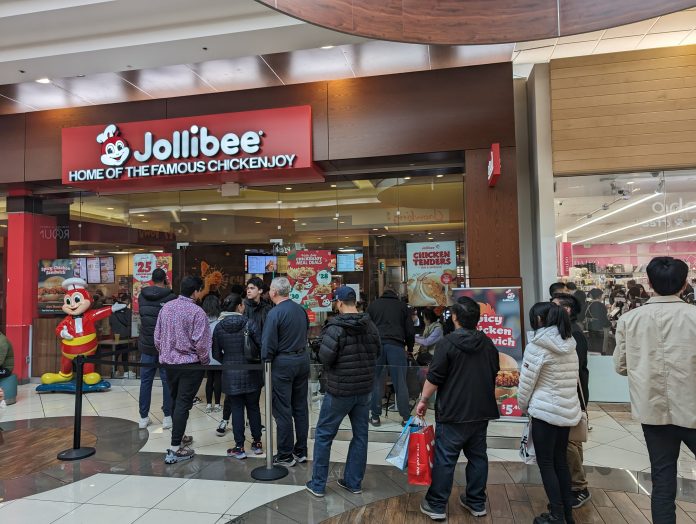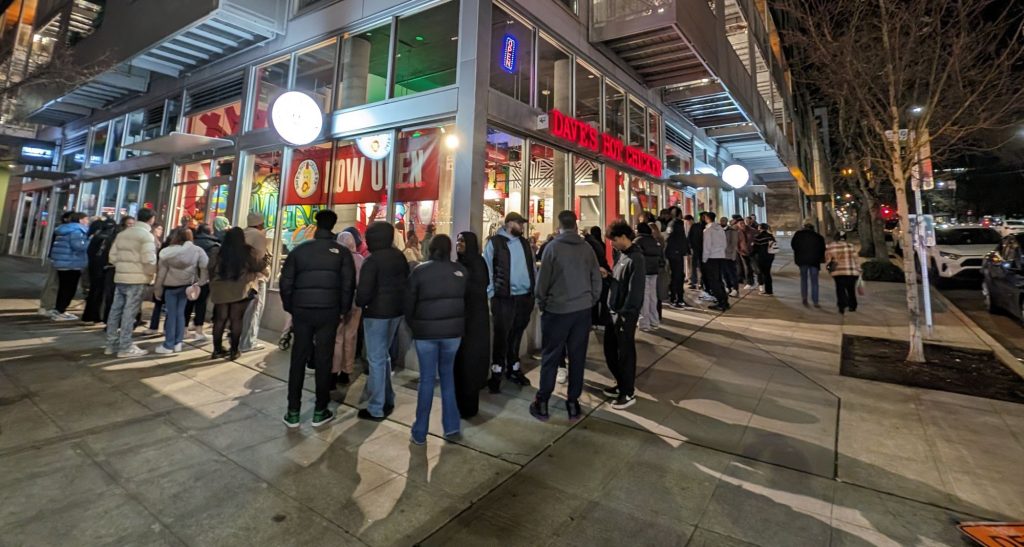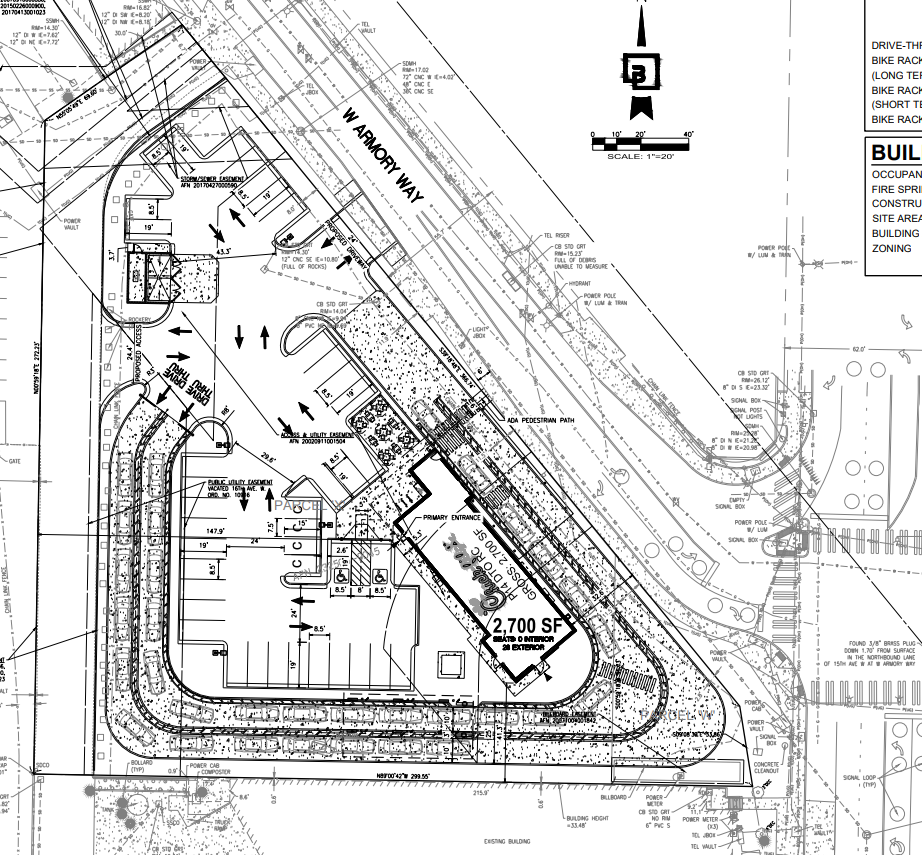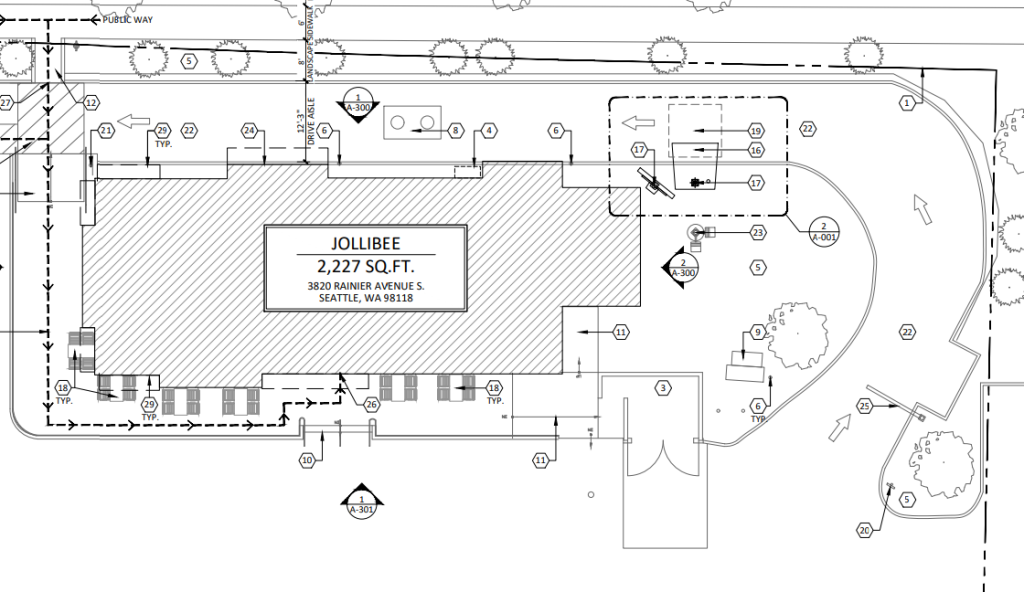Clogging arteries is a fast food joint specialty, but good urban planning can get things flowing.
You may have seen in the news that some new and gargantuan players are entering the Seattle fried chicken scene and that others are expanding. Jollibee is looking to expand up north into its first Seattle location in the Mount Baker/Columbia City area. Raising Cane’s is planning to enter the Seattle metro area with locations in the U District and Renton. Chick-fil-a filed plans for a new location in Interbay.
Smaller franchises starting up and expanding in the Seattle metro include Shaq’s Big Chicken that has opened new locations in Mukilteo and Renton. Dave’s Hot Chicken opened in Capitol Hill with nine more planned in the Seattle area, per the Capitol Hill Blog. On top of the chains, more local new fried chicken places include Mt. Joy and Sodam Chicken’s Capitol Hill location.
Under the umbrella of fast food, fried chicken in particular has had quite a surge in popularity and all indications from the industry show that to be the case with the sprouting of new fried chicken joints by the season. You can see what the market is taking advantage of on the street. If you live or travel by the hotter spots, you’ll see lines out of the door for the most in-demand chicken.
This popularity gives fried chicken joints quite an impact on the places where we live, with people willing to queue up in significant lines for greasy poultry. This impact comes from how those people are traveling to the fried chicken joint, lining up, and interacting with our streets and each other. Of course, these impacts are not unique to fried chicken, anything that achieves the zeitgeist that fried chicken currently has will have that impact.
Perhaps the two fried chicken franchises that are most emblematic of the extremes that popular restaurants can have on the public realm are Dave’s Hot Chicken and Chick-fil-a. The new Dave’s Hot Chicken is the best example of how a popular fast-food chain can integrate into our cities. Meanwhile, Chick-fil-a is probably the worst offender.
Dave’s Hot Chicken first and currently only entry into Seattle demonstrates good utilization of the urban infrastructure that it picked out. Located in a newer midrise, the location gets to flex its extra wide sidewalks, around 12-feet-wide, and sidewalk corner. This allows the location to handle large lines with ease. It brings life on to the street without being much of a burden on the transportation infrastructure. You can still walk or roll by the long line with relative ease.
Chick-fil-a has had similar popularity but instead of locating in strong pedestrian environments, its location is on the complete opposite side of the spectrum and entirely caters to a car-bound consumer. When the Wilburton (Bellevue) Chick-fil-a opened, it infamously choked its neighboring transportation infrastructure. Big 30-minute long backups spanned into I-405, people parked in other parking lots, and the franchisee had to turn customers away at its debut. When left to their own devices, drivers trying to get into a drive-thru will block pedestrian crossings and sidewalks with their vehicles.
Instead of adjusting its business model in a more sustainable manner, the Wilburton location recently reopened as a drive-thru-only location. It ceded even more business to cars, potentially inducing more cars into a critical part of the city. The location is kitty-corner to the Wilburton Station, a light rail station whose neighborhood is planned to be reimagined through the Wilburton Vision and Bellevue comprehensive plan update.
New car magnets undermine the planning efforts around them. They will last decades in neighborhoods aiming to transform into multi-modal hubs. In Seattle, Chick-fil-a is somehow doing double duty in undermining upcoming station areas with another location planned in Interbay. With its two curb cuts, 40 parking stalls, and two drive-thru lanes, the planned location will draw more traffic to 15th Avenue W, where three light rail stations are planned.
Fortunately, Chick-fil-a isn’t the worst of it. The Seattle location of Raising Cane’s is planned at the corner of NE 45th Street and University Way NE, like the Dave’s Hot Chicken location it will also benefit from a light rail station area and a sidewalk corner. The location does lack sidewalk width, at nearly half of the size as the infrastructure around Dave’s Hot Chicken, so it’ll likely congest the pedestrian environment on occasion.
Jollibee is unfortunately looking to reopen the drive-thru that the old Taco Bell in Rainier Square Plaza once utilized before Mod Pizza closed it when they occupied the location. The one reprieve that the transportation infrastructure will have from their new drive-thru is that no curb cuts are that close by, so the potential of spillage into the street is less likely. Safeway, on the other hand, may be upset with the congestion that their shared parking lot may experience.
Fortunately, there are ways to prevent the worst outcomes and create enriching locations for expanding chains. Chick-fil-a has been stopped from harming a light rail station area before. Back in 2013, Chick-fil-a had planned a location in Northgate. These plans were disrupted by forward-thinking planning in the 1993 Northgate Area Comprehensive Plan that prohibited drive-in business on NE Northgate Way. Dave’s Hot Chicken can handle pedestrian crowds with the pedestrian-designated zone that required the developer to build the wide sidewalks we see today. Application of these policies for all of our station areas can prevent Chick-fil-as and create Dave’s Hot Chickens.
When done well, good fried chicken will have people walking and boarding trains to gather in and outside. Done poorly, cars will line up and clog up transportation infrastructure while gas tanks and batteries drain. Intentional planning can prevent the future fried chicken joints and the next food fad from clogging up our sidewalks and streets. It can also create pleasant places where vitality can seamlessly spill into the public realm. Advocate for the creation of these places as the region plans for the future. Our comprehensive plan updates are where you can be heard next.
The Urbanist staff occasionally teams up to cover breaking news or tackle large projects. See more about our team on the staff page.







